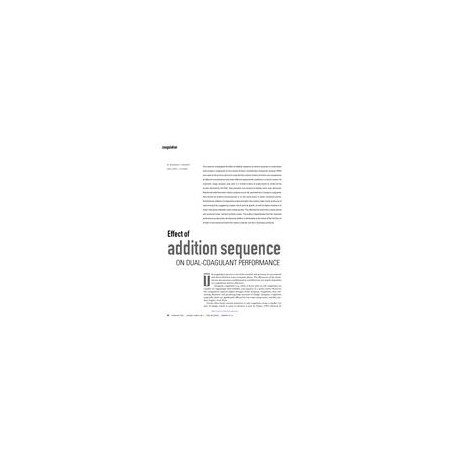Cart
0
Product
Products
(empty)
No products
To be determined
Shipping
$0.00
Total
Product successfully added to your shopping cart
Quantity
Total
There are 0 items in your cart.
There is 1 item in your cart.
Total products
Total shipping
To be determined
Total
New
Reduced price!
 View larger
View larger
 View larger
View larger
AWWA JAW59513
M00053422
New product
AWWA JAW59513 Journal AWWA - Effect of Addition Sequence on Dual-Coagulant Performance
Journal Article by American Water Works Association, 02/01/2004
Ammary, Bashaar Y.; Cleasby, John L.
Full Description
The use of dual coagulants in the coagulation process can maximize the benefits of both coagulants. Combining an inorganic coagulant such as alum or ferric salts with a cationic polymer helps reduce the inorganic coagulant dosage and produce larger, stronger flocs. This research studied the effect of addition sequence on the performance of ferric nitrate and a cationic polymer to ascertain whether the advantages of dual coagulation could be further enhanced. Three different sequence additions were investigated: adding the polymer before the ferric nitrate; adding the polymer after the ferric nitrate; and, adding the polymer and ferric nitrate at the same time. Results indicated that dual-coagulant performance was optimized when the cationic polymer and inorganic coagulant were added simultaneously. According to the authors' hypothesis, the addition sequence influences flocculation kinetics because of differences in rapid-mixing duration, the matrix of the aggregate first formed, and the sequence of adsorption. The combined effects of these three factors resulted in higher flocculation index values, with floc particles exhibiting a higher growth rate as well as higher resistance to shear induced by extended rapid mixing. The combined use of cationic polymers and inorganic coagulants has been found effective for treating high-turbidity waters. For utilities using cationic polymers and inorganic coagulants in their treatment process, simultaneous addition of coagulants at the same location in the plant may make dual-coagulant performance even more effective. Includes 27 references, tables, figures.In stock

